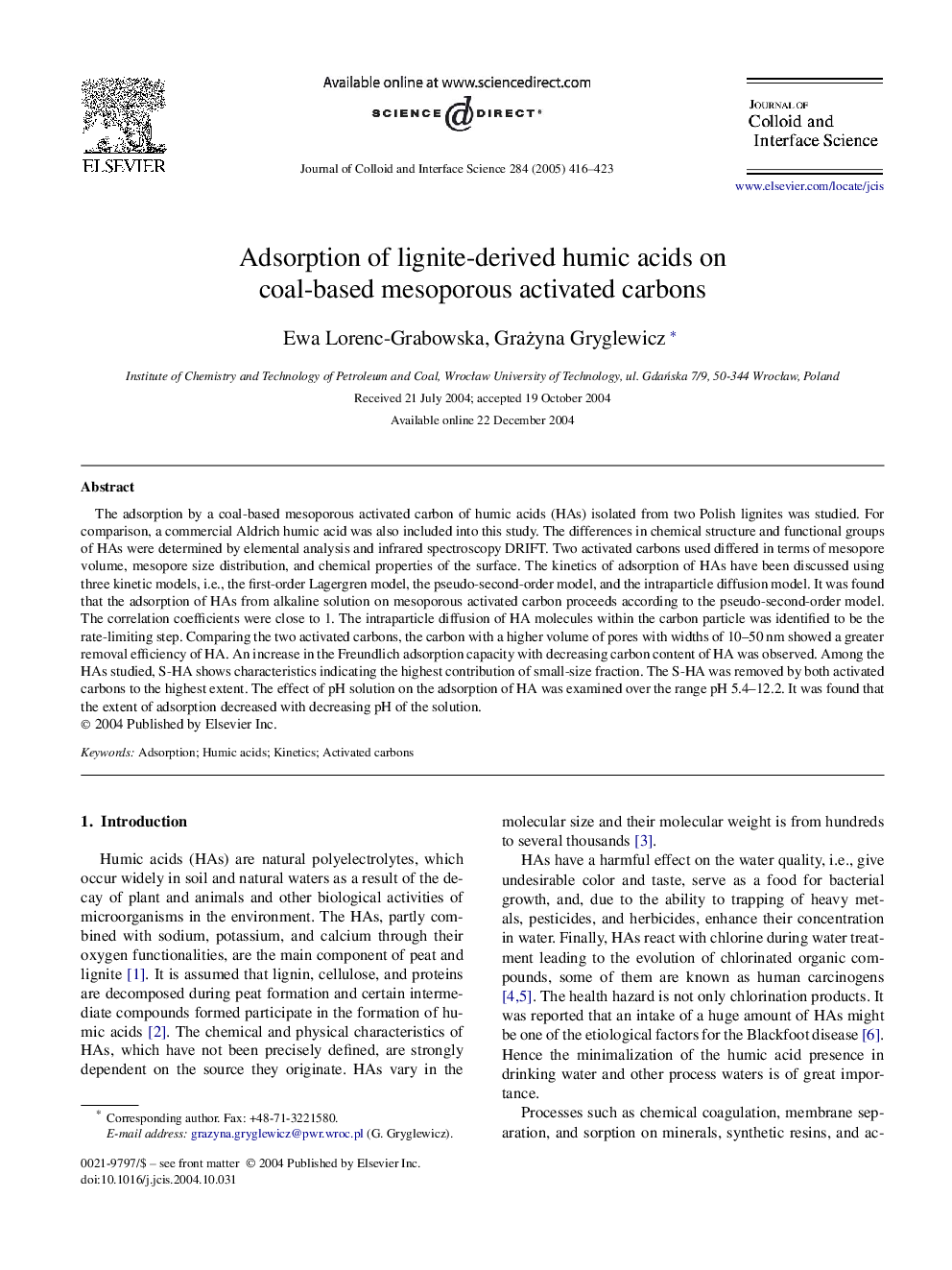| Article ID | Journal | Published Year | Pages | File Type |
|---|---|---|---|---|
| 10378210 | Journal of Colloid and Interface Science | 2005 | 8 Pages |
Abstract
The adsorption by a coal-based mesoporous activated carbon of humic acids (HAs) isolated from two Polish lignites was studied. For comparison, a commercial Aldrich humic acid was also included into this study. The differences in chemical structure and functional groups of HAs were determined by elemental analysis and infrared spectroscopy DRIFT. Two activated carbons used differed in terms of mesopore volume, mesopore size distribution, and chemical properties of the surface. The kinetics of adsorption of HAs have been discussed using three kinetic models, i.e., the first-order Lagergren model, the pseudo-second-order model, and the intraparticle diffusion model. It was found that the adsorption of HAs from alkaline solution on mesoporous activated carbon proceeds according to the pseudo-second-order model. The correlation coefficients were close to 1. The intraparticle diffusion of HA molecules within the carbon particle was identified to be the rate-limiting step. Comparing the two activated carbons, the carbon with a higher volume of pores with widths of 10-50 nm showed a greater removal efficiency of HA. An increase in the Freundlich adsorption capacity with decreasing carbon content of HA was observed. Among the HAs studied, S-HA shows characteristics indicating the highest contribution of small-size fraction. The S-HA was removed by both activated carbons to the highest extent. The effect of pH solution on the adsorption of HA was examined over the range pH 5.4-12.2. It was found that the extent of adsorption decreased with decreasing pH of the solution.
Related Topics
Physical Sciences and Engineering
Chemical Engineering
Colloid and Surface Chemistry
Authors
Ewa Lorenc-Grabowska, Grażyna Gryglewicz,
